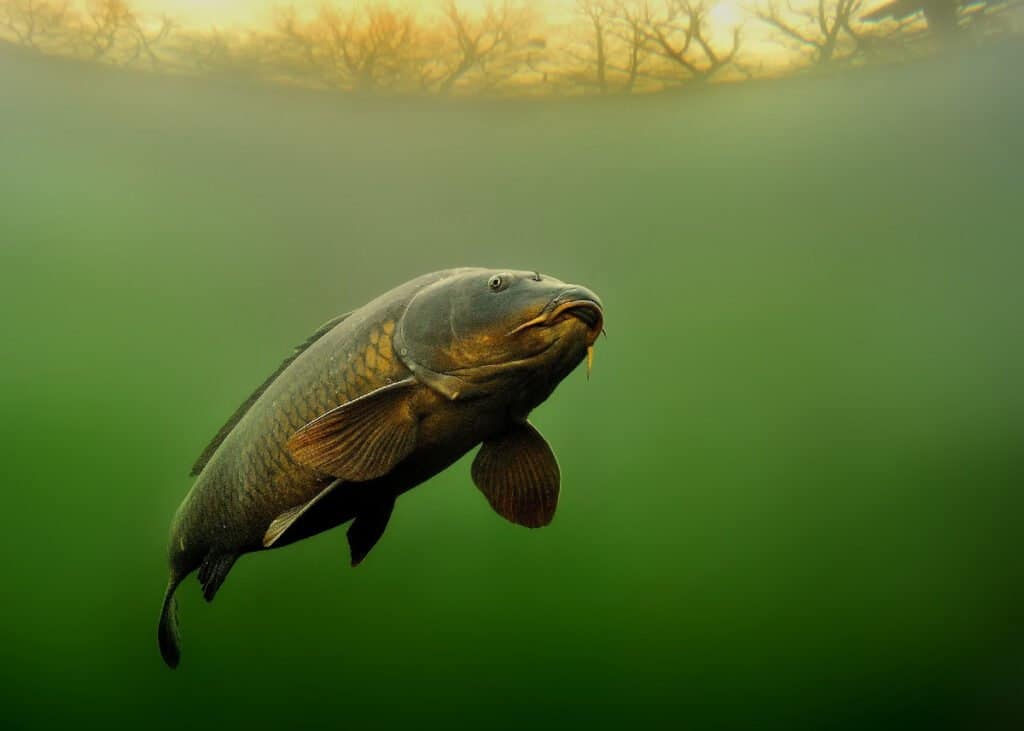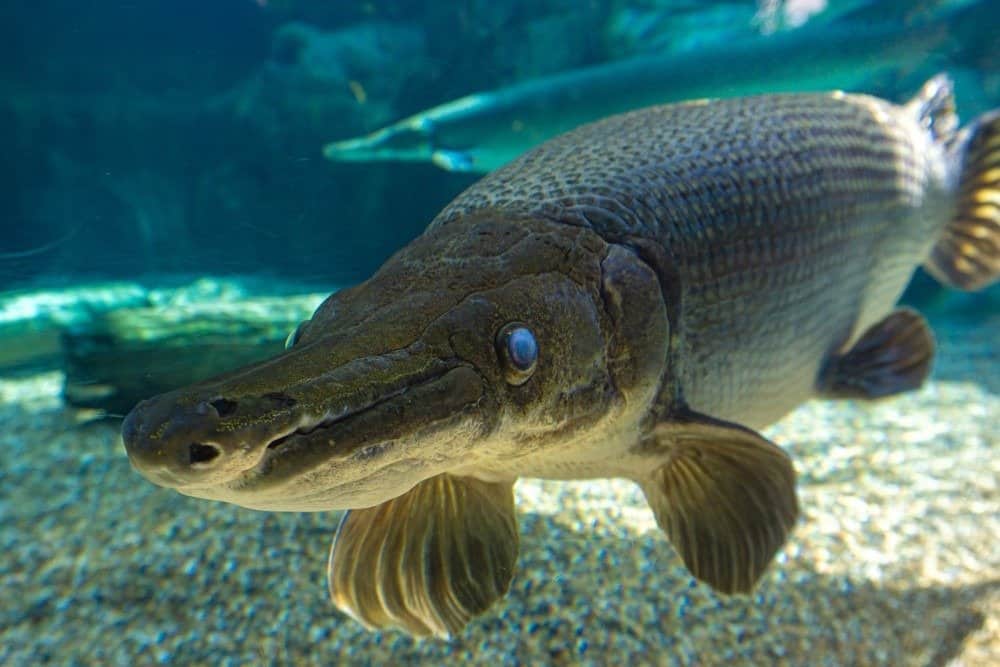Louisiana is filled with hundreds of opportunities to fish for freshwater fish. It’s a state with well over 50 lakes, rivers, and ponds. You can fish in popular spots like Grande Isle, Caney Lake, New Orleans, and Henderson Lake. A popular fish for anglers is the common carp since it’s big and challenging. Are you ready to learn more about the largest common carp ever caught in Louisiana? Follow along to discover its size. You might even get lucky on your next fishing trip and land a new record common carp.
About the Common Carp
Common carp, also known as Eurasian carp are freshwater fish that live in lakes and rivers in Europe and Asia. However, they can be found throughout North America. Interestingly, while the native population is highly vulnerable, in other parts of the world, like the United States, the population is abundant.

The common carp is a popular with fisherman due to their size and challenging nature.
©iStock.com/HenrikNorway
Size and Appearance
Common carp are large fish, weighing up to 100.5 pounds. The carp has a gold sheen, especially on its head. Its body is robust and thick. Common carps also have large and shiny scales throughout their bodies, which sets them apart from other freshwater fish species. Common carp have dark brown or orange caudal and anal fins. There is a size difference between wild and domestic common carp. Wild common carp are slimmer with red flesh and protruding lips. Domestic common carp are at least 3.2–4.8 times larger than wild-caught common carp. Although some common carp can grow over 80 pounds, the average wild common carp weighs 4.4 to 30.9 pounds and is 16 to 31 inches long.

Common carps have large and shiny scales throughout their bodies, which sets them apart from other freshwater fish species.
©Martin Pelanek/Shutterstock.com
Diet
These large and shiny fish are omnivorous. While common carp eat aquatic plants and vegetation, they prefer fish eggs, insects, crustaceans, mollusks, benthic worms, and smaller fish. Common carp aren’t picky eaters and they hunt during the day and night. However, they eat the most at night and during sunrise.
Predators
Adult common carp have few predators. Instead, young, small, and vulnerable common carp are eaten by larger fish, birds, and humans. Birds like great blue herons feed on young carp, but will also swallow an adult carp if small enough.
The Largest Common Carp Ever Caught in Louisiana
In April 1981, James D. Rodgers, Jr caught the largest common carp ever in Louisiana. He reeled in the 35-pound fish from Bussy Brake. The second-largest common carp almost beat the record. In 1971, James E. Strange caught a 33-pound common carp also in Bussy Brake. Although Edgar Coltharp, Sr. did not catch the largest common carp in the state, he holds two records, both caught in June 1975. Currently, he holds the record for the 4th and 8th largest common carp ever caught in Louisiana.

James D. Rodgers, Jr caught the largest common carp ever in Louisiana in 1981, weighing 35 pounds.
©Rostislav Stefanek/Shutterstock.com
Other Common Fish in Louisiana
Next time you visit Louisiana and plan a fishing trip, you don’t have to only focus on common carp. Instead, there are at least 224 species of freshwater and saltwater fish in the state. Follow along to learn more about some of the most common fish in Louisiana.
Alligator Gar
Alligator gar are one of the most common fish in Louisiana. They are also very large. These ray-finned euryhaline fish is also one of the most largest freshwater fish in North America. They have torpedo-shaped bodies and look similar to alligators. These large fish are sometimes called “primitive fishes”, or “living fossils”. Their bodies are a dark or olive green, but sometimes can be black. Alligator gar also has ganoid scales, which are bone-like and tough. They are almost impossible to penetrate and act as a defense against predators.

Alligator gar have torpedo-shaped bodies that look similar to alligators and are one of the most common fish in Louisiana.
©TKBackyard/Shutterstock.com
Speckled Trout
The speckled trout, also known as the spotted seatrout is a fish common across the southern United States from Maryland to Florida. Adults are about 19 to 37 inches long and weigh approximately 3 to 7 pounds. Younger and smaller speckled trout eat shrimp and other crustaceans, but as they grow they expand their diet and eat fish. It is a top ten species for recreational fishing in the United States according to the National Oceanic and Atmospheric Administration (NOAA).
Black Grouper
Black groupers are marine ray-finned fish. They have large bodies and can measure about 29 inches long, but they can grow as large as 59 inches long. The largest recorded black grouper was 220 pounds. They live about 30 years. Black groupers live in coral reefs and rocky bottoms. Black groupers are also common fish used in recipes. They are available year-round in the Atlantic and Gulf of Mexico. Black groupers all begin their lives as a female but change into males as they age. There is 1 male black grouper for every 4 female groupers.
Where is Bussy Brake Located on a Map?
Situated 5 miles northwest of Bastrop along Bonner Ferry Road (LA Hwy 593), Bussey Brake WMA offers convenient access with two parking areas (north and south) on the west side of the highway, while the self-clearing permit station can be found at the north parking area.
Here is Bussy Brake on a map:
The photo featured at the top of this post is © Edvard Ellric/Shutterstock.com
Thank you for reading! Have some feedback for us? Contact the AZ Animals editorial team.






